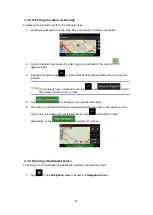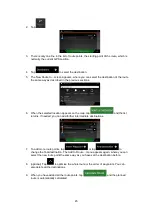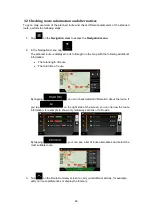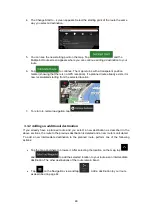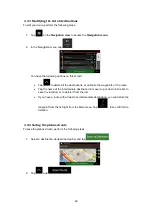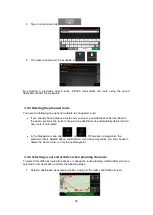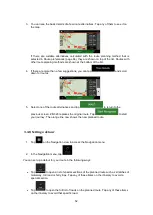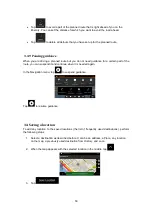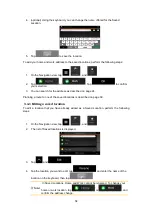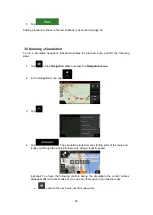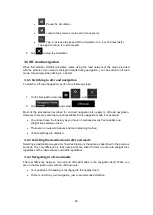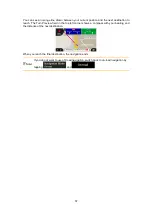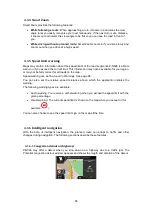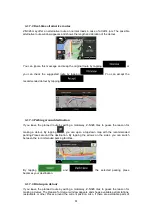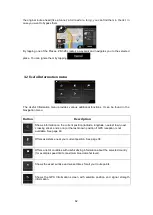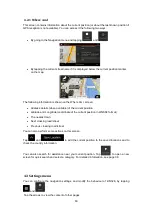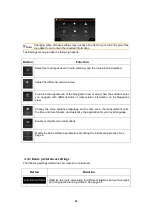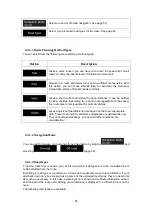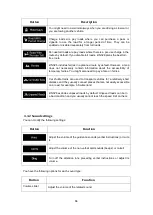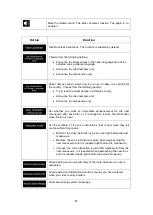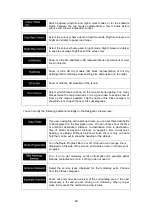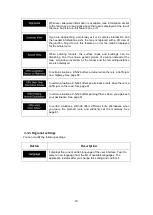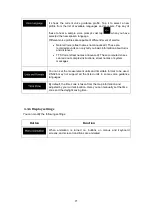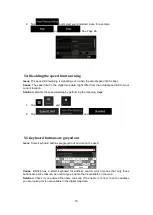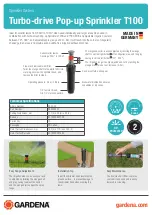
58
4 Reference guide
The following sections describe the different concepts and menu screens of Z-N326.
4.1 Concepts
The following sections describe and explain navigation-related concepts.
4.1.1 2D/3D GPS reception
The GPS receiver uses satellite signals to calculate its (your) position and needs at least four
signals to give a three-dimensional position, including elevation. Because the satellites are
moving and because objects can block the signals, your GPS device might not receive four
signals. If three satellites are available, the receiver can calculate the horizontal GPS position
but the accuracy is lower and the GPS device does not give you elevation data; only 2D
reception is possible.
Several factors have an impact on the deviation between your real position and the one given
by the GPS device. For example, signal delay in the ionosphere or reflecting objects near the
GPS device have a different and varying impact on how accurately the GPS device can
calculate your position.
4.1.2 Natural and TTS voices
Natural voices are the traditional type of voice instructions. Every phrase that occurs in voice
guidance messages is recorded in a studio with a real person. The advantage of pre-recorded
voice is that it sounds really natural, but the range of instructions that can be given this way is
limited. Location-specific information such as street names cannot be announced.
TTS technology provides a machine-generated way to give voice instructions. The advantage
of TTS is that it can announce street names, traffic events, route summary, and traffic rules.
4.1.3 Route calculation and recalculation
A route is a sequence of route events, that is, manoeuvres (for example, turns and
roundabouts) to reach the destination. The route contains one starting point and one or more
destinations. The starting point is the current (or last known) position by default. If you need to
see a future route, the starting point can be replaced with any other given point. See page 47.
Once the destination has been selected, Z-N326 calculates the route based on your
preferences. These preferences are the route planning method and the road types used or
avoided when calculating the route. For detailed information on all the preferences, see Route
preferences settings. See page 64.
Z-N326 automatically recalculates the route if you deviate from the proposed itinerary.

